
OR
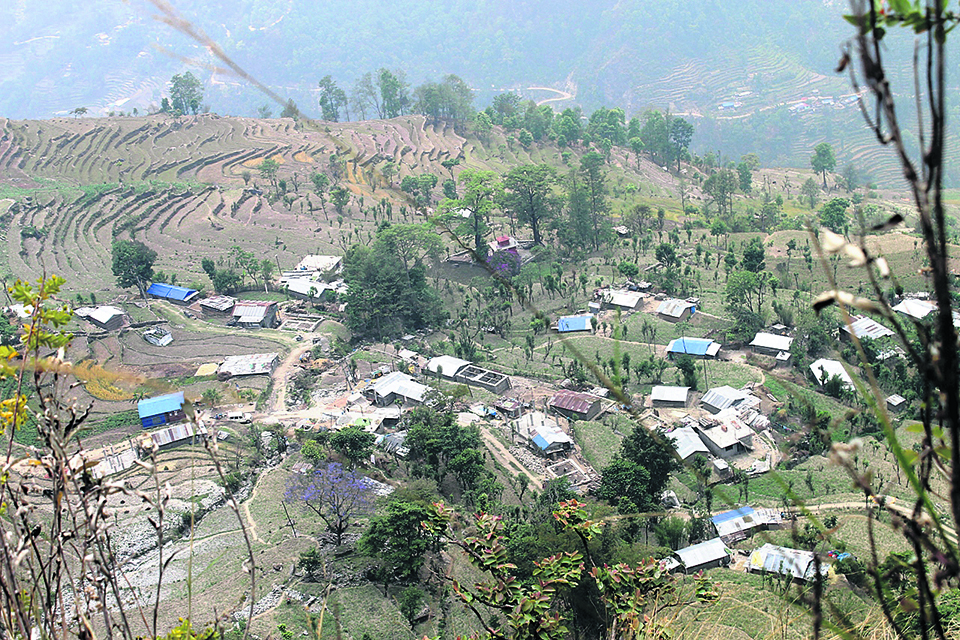
SINDHUPALCHOWK, May 7: Kristi Tamang, one among the thousands of people to become homeless after the devastating earthquake of 2015, recently moved into her newly constructed concrete house. This might have given her a feel of safety and security. However, this is not the case.
“We lived in a makeshift hut for the last three years. Now, we have started living in our new house. But we are not happy,” she said. “It's not only me, but none of my family member is happy with it,” she added.
The reason behind the anxiety of the family is the condition of the land on which the house is constructed. Earthquake and landsides that year left the land extremely fragile. While landslides swept huge swaths of land in the district away, the remaining land was left with cracks all over.
“We are not educated people, but to understand that the land is not safe, it needs no education. It is so clearly visible,” she lamented.
Even though the land on which our entire settlement was damaged, we had no place to resettle. Therefore, we built house on the very land that was completed destroyed by earthquakes and landslides. Ratna Kumari Tamang, A quake victim.
After listening to her arguments, one might ask why did her built the house on such a piece of land in the first place. Tamang says that there was no land that could be used to build the new house. “The entire hill was cracked by the quake,” she says.
Tamang's settlement was among the hardest hit during the earthquake and aftershocks. Later when landslides begun to bother people, the community was the most hit again.
“Until before the earthquake and landslides, we did not know that we were living on a very fragile land. There were landslides in this area in the past as well, but post quake we witnessed our land's fragility in its entirety,” Tamang noted.
It has been few days since her family shifted into the new house. Instead of happiness, fear has been building in their heart. During their stay in the hut, they feared storms, rain, and cold. However, now they are bothered that someday landslide could sweep away the whole house and themselves.
“My whole family is worried about our and this house's fate,” said Tamang while breast-feeding her child. She pointed to big cracks on land some meters away from her home and expressed fear that with such visible cracks the whole hill top could be swept away by landslide.
Her neighbor Ratna Kumari Tamang has not different fears. Her family, also constructed house over the land they had, and that is equally full of cracks.
“The government gave us little money to build house but it required that we have our own land to claim the grant. As we did not have another piece of land where we could construct our new home, we had to build our house on this unsafe land,” she lamented.
The hill, on which these families' houses are constructed, is locally known as Keshari Danda. Dozens of Tamang families and others used to live there. After the earthquake, they all were rendered homeless.
“After we were rendered homeless, we slept under open sky for several days. There was no food to eat, nothing to wear. We cannot explain the situation that we faced back then. Surviving the disaster was a big thing in itself,” Ratna Kumari reminisced. “Now it's already been three years, and things have not changed much for us,” she added.
Even though pledges for support came from various national, international bodies, earthquake victims have not felt much change. Except for the benevolent act like that of Dhurmus-Suntali Foundation, who constructed and handed over integrated model houses to victims, they have not seen other pleasant developments. Be it in Gorkha, the epicenter of the earthquake or Sindhupalchowk or even the capital, Kathmandu, victims are full of complains about reconstruction.
“Even though the land on which our entire settlement was damaged, we had no place to resettle. So, we built house on the very land that was completed destroyed by earthquakes and landslides,” Ratna Kumari said.
It is not just the case of Keshari Danda that the victims have built new or rebuilt houses in fragile land. According to Chandra Bahadur Tamang, many such risky hills in Sindhupalchowk still continue to be home to many of victims.
“Where would you go after abandoning your ancestral land? You need huge amount of money to resettle somewhere else. There many of us here built our new house on a fragile land. Its riskier, but we did not have option,” he stated.
A team of experts had inspected the land for the reconstruction purpose. However, that was just once, and after a few months of the earthquake. “Since then we have seen none from the government's side taking interest in such thing,” Chandra Bahadur reported.
You May Like This
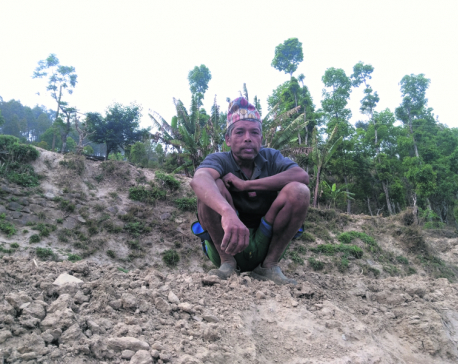
Reconstruction halted as water sources dry up in Sindhupalchowk
CHAUTARA, April 24: Fifty-year-old Yam Bahadur Giri, a local of Gothapani Village of Chautara in Sindhupalchowk district, used to help in... Read More...
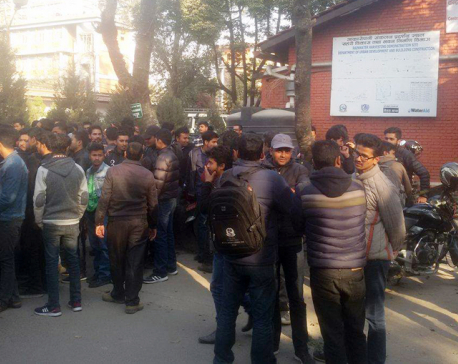
1200 reconstruction engineers, technicians submit resignations
KATHMANDU, Dec 21: After the government did not address their demands, agitating engineers and other technicians deployed for assisting in the... Read More...

'Materials bank' must to ease reconstruction works: MPs
KATHMANDU, Aug 31: Member of Parliaments (MPs) have asked the government to set up a "material bank" so that the... Read More...




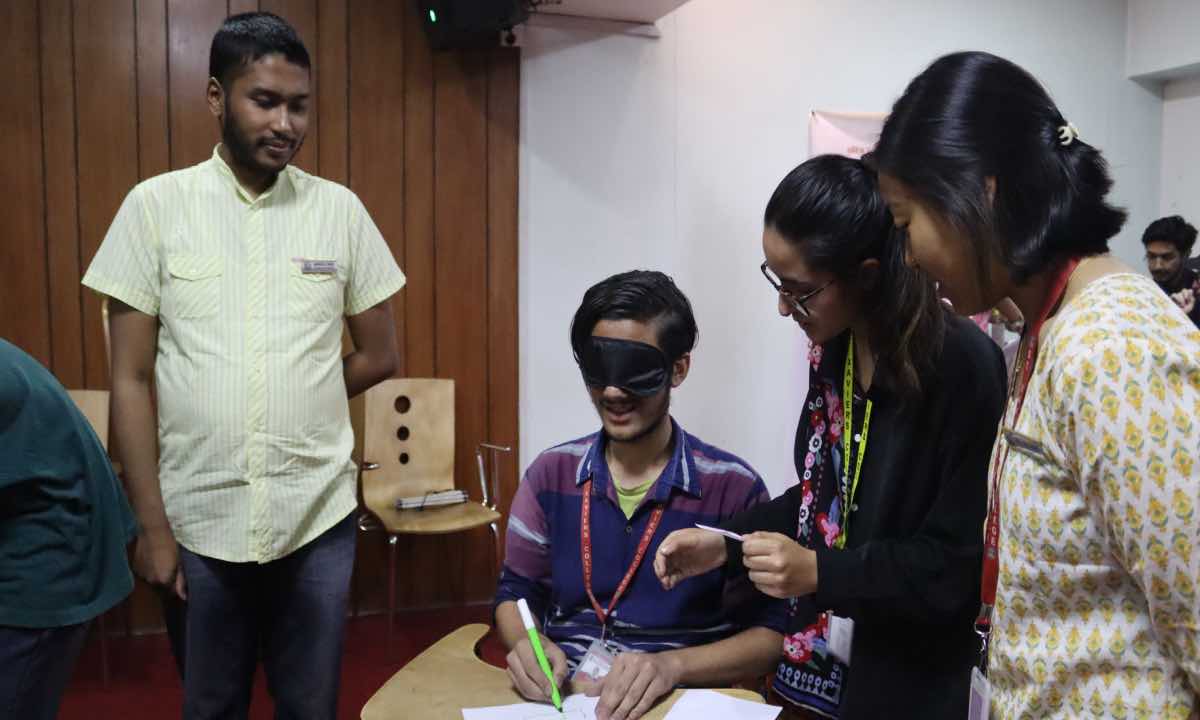

Just In
- Forest fire destroys 13 houses in Khotang
- First meeting of Nepal-China aid projects concludes
- Lungeli appointed as Minister for Labor and Transport in Madhesh province govt
- Bus knocks down a pilgrim to death in Chitwan
- One killed in tractor-hit
- Karnali Chief Minister Kandel to seek vote of confidence today
- Chain for Change organizes ‘Project Wings to Dreams’ orientation event for inclusive education
- Gold price decreases by Rs 200 per tola today










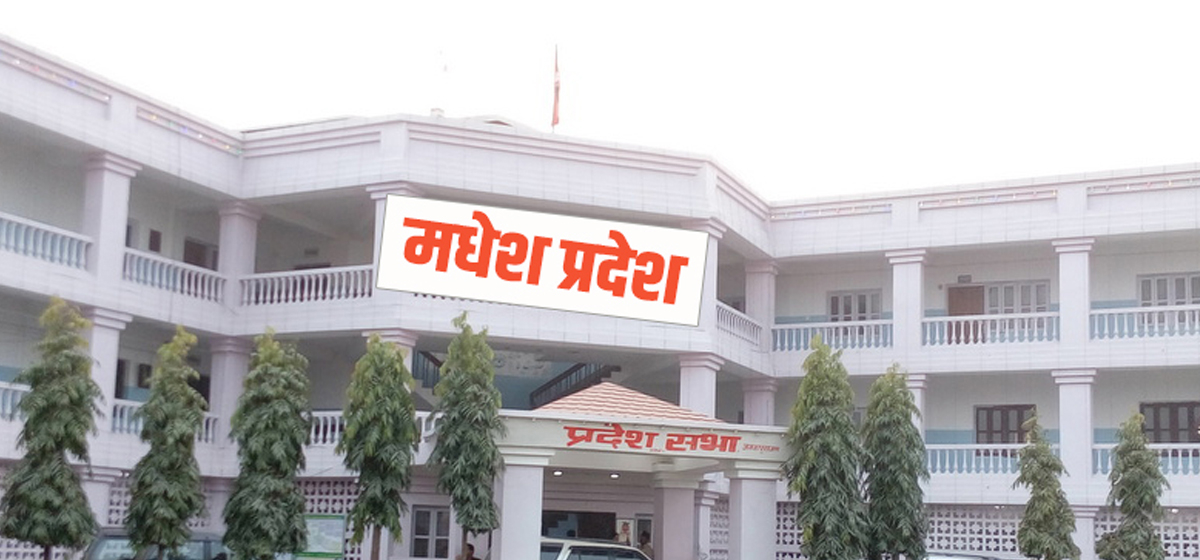


Leave A Comment